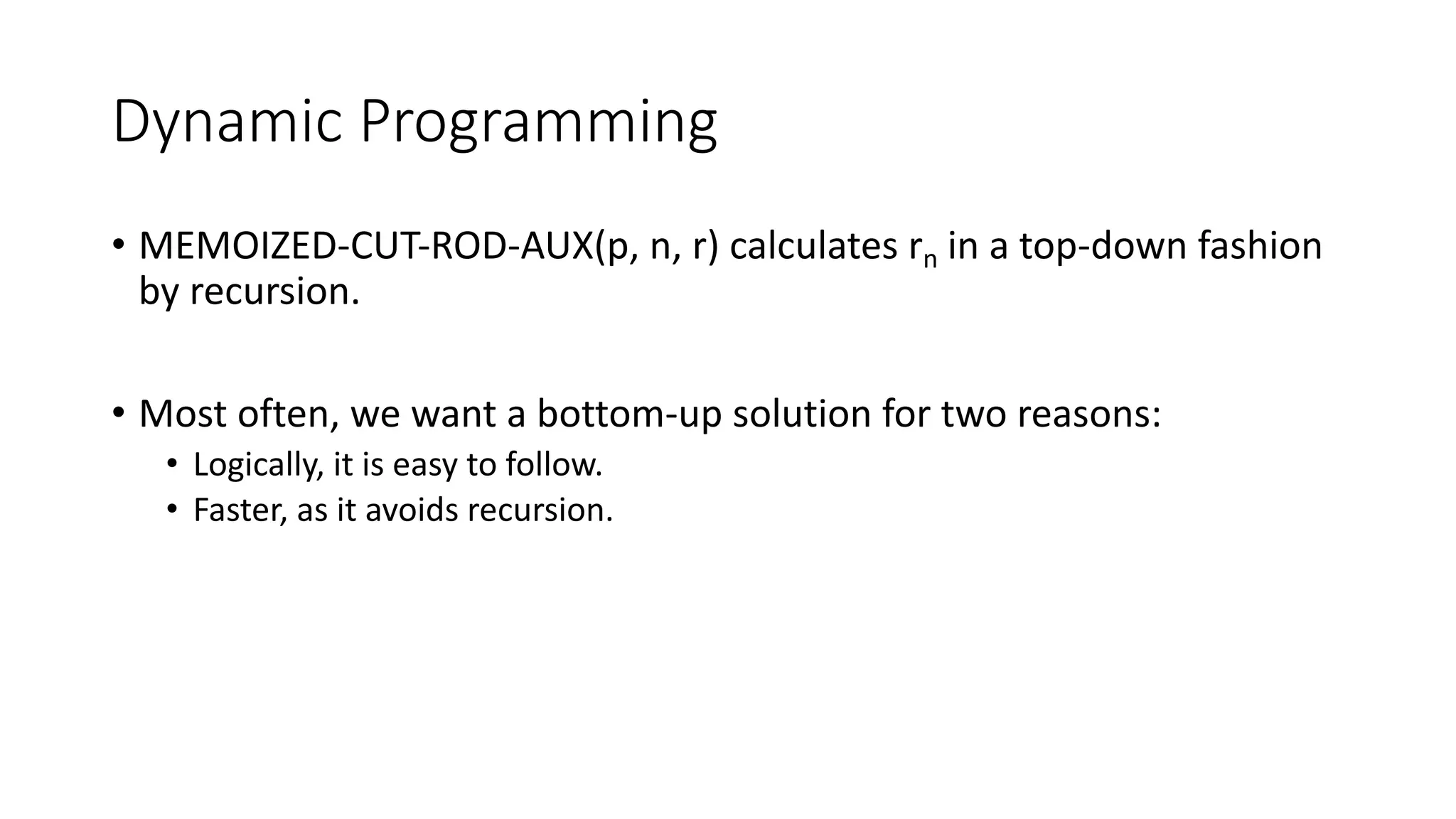This document discusses dynamic programming and uses the rod cutting problem as an example to explain key concepts. It describes how dynamic programming breaks problems down into overlapping subproblems that are solved recursively once and stored, unlike regular divide and conquer which solves subproblems repeatedly. It presents the recursive and memoized recursive algorithms for the rod cutting problem to calculate the maximum revenue, and explains how a bottom-up dynamic programming solution would be preferable for being logically easier to follow and faster by avoiding recursion.

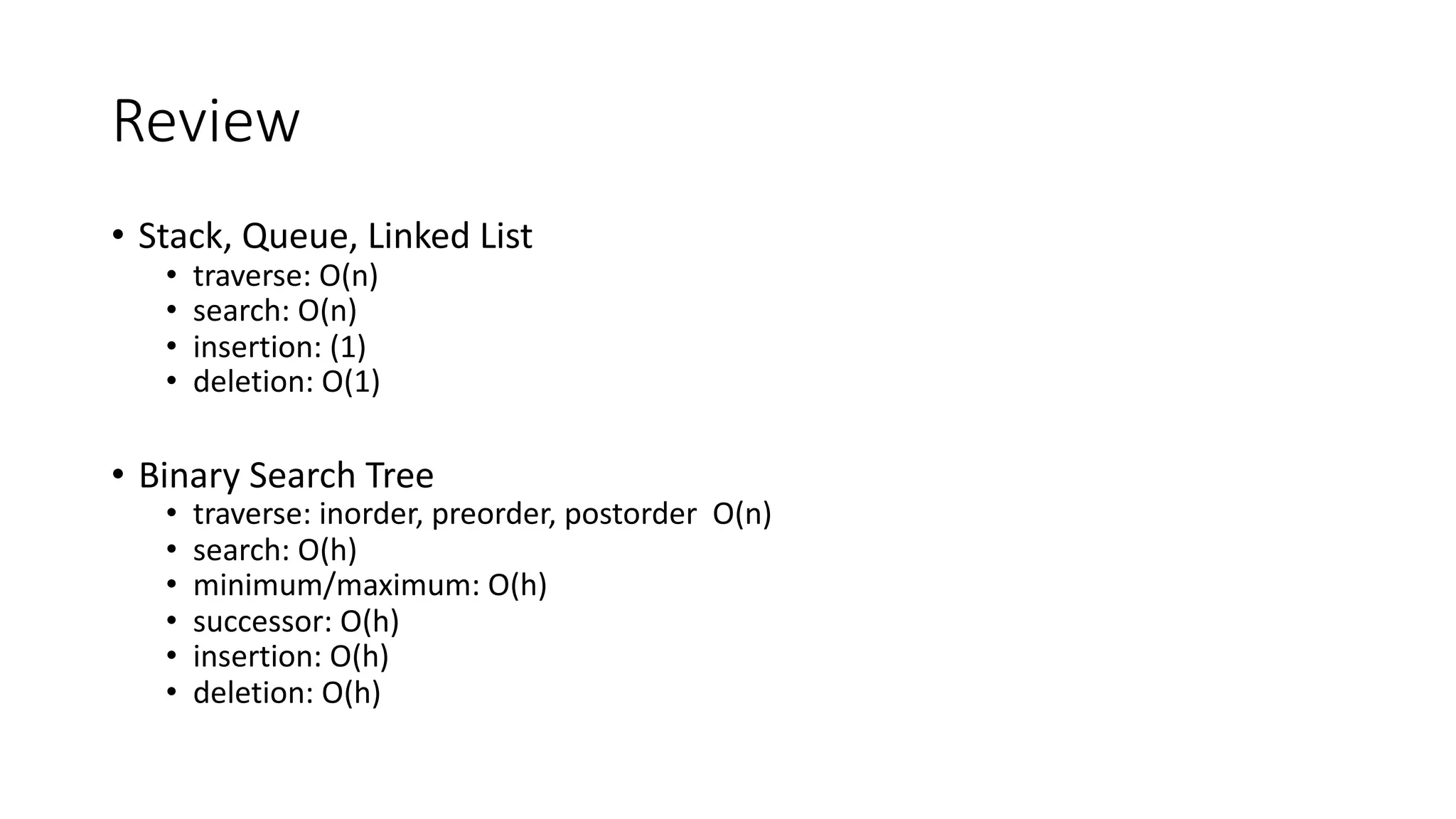
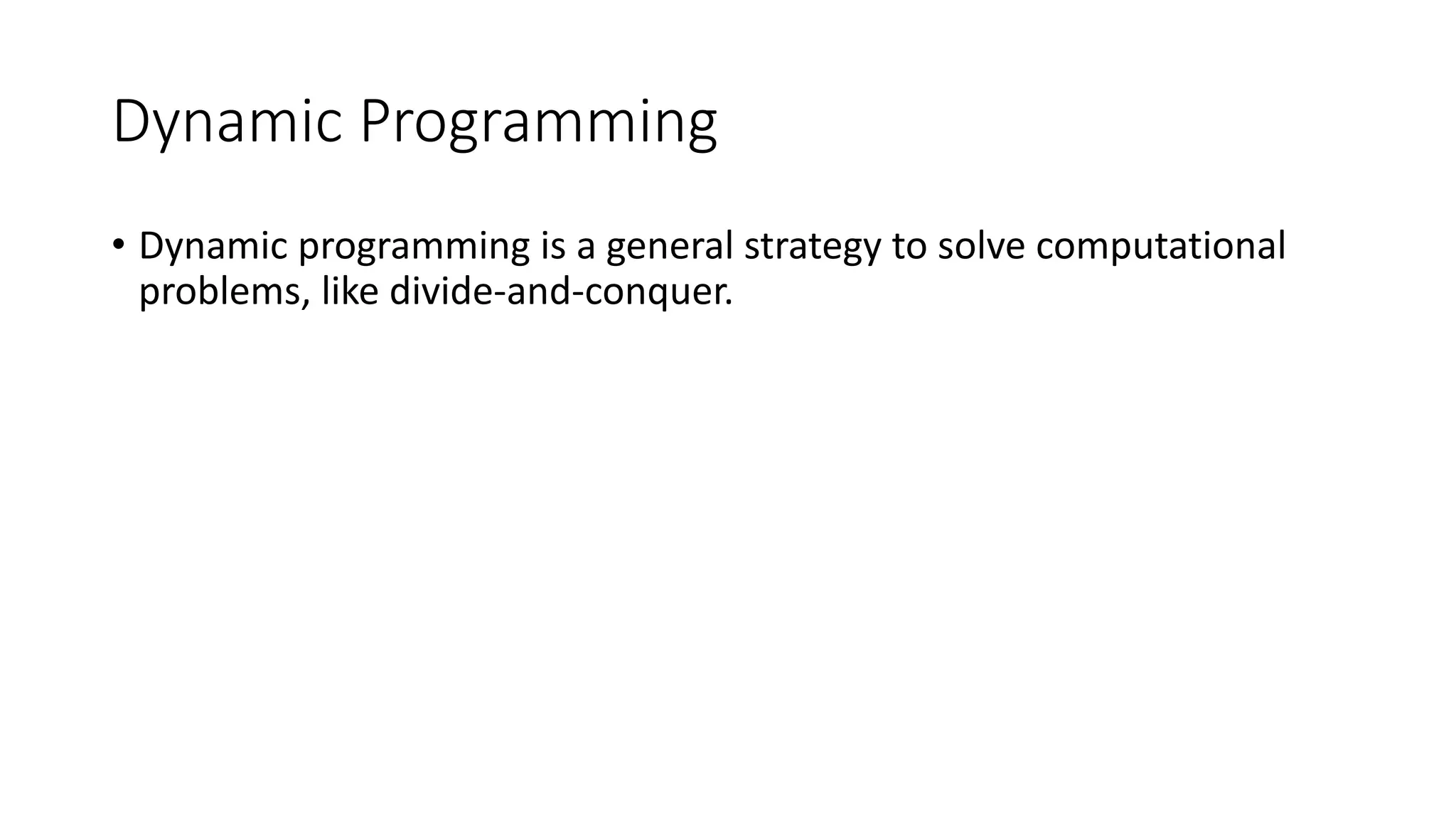
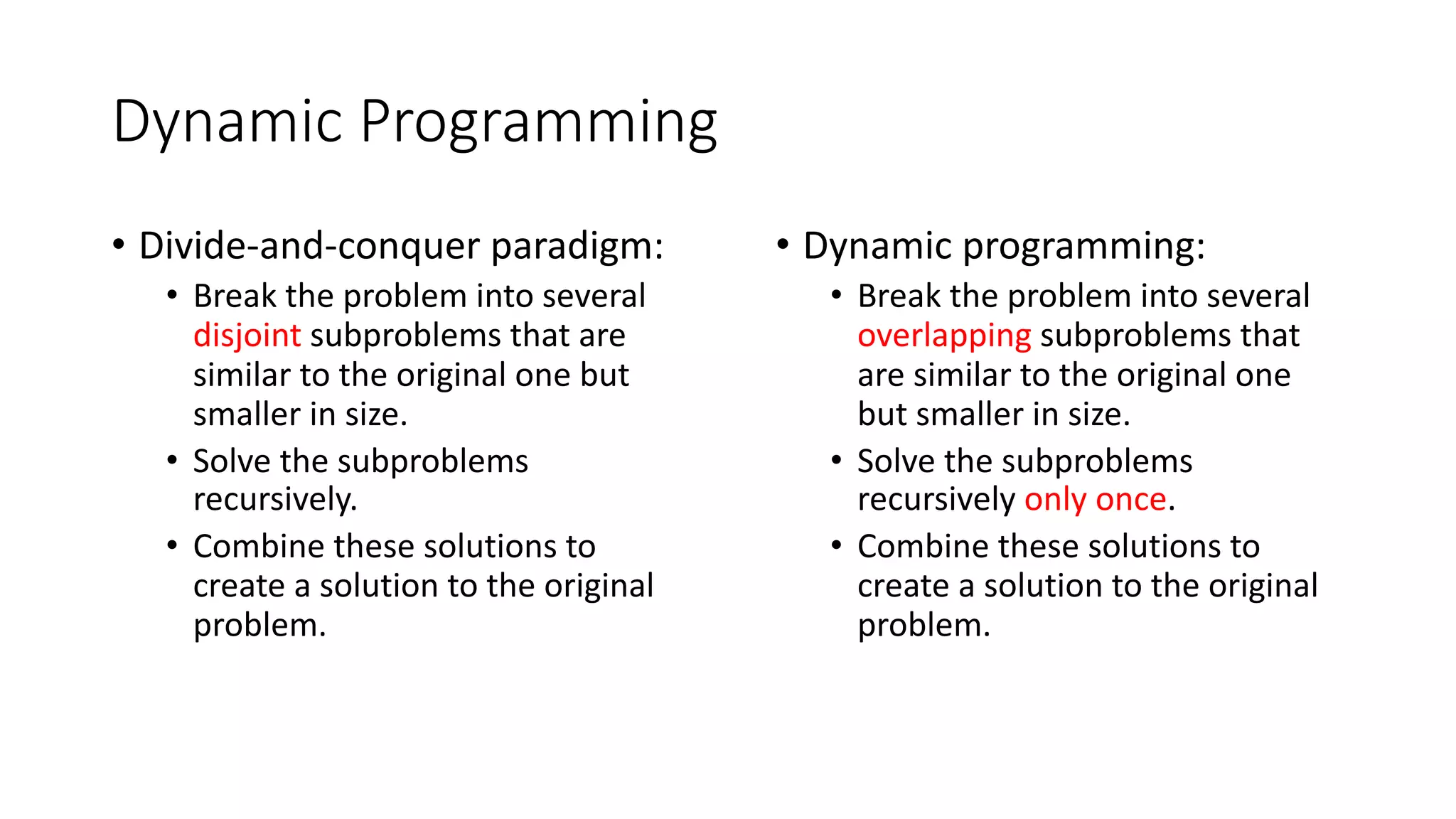
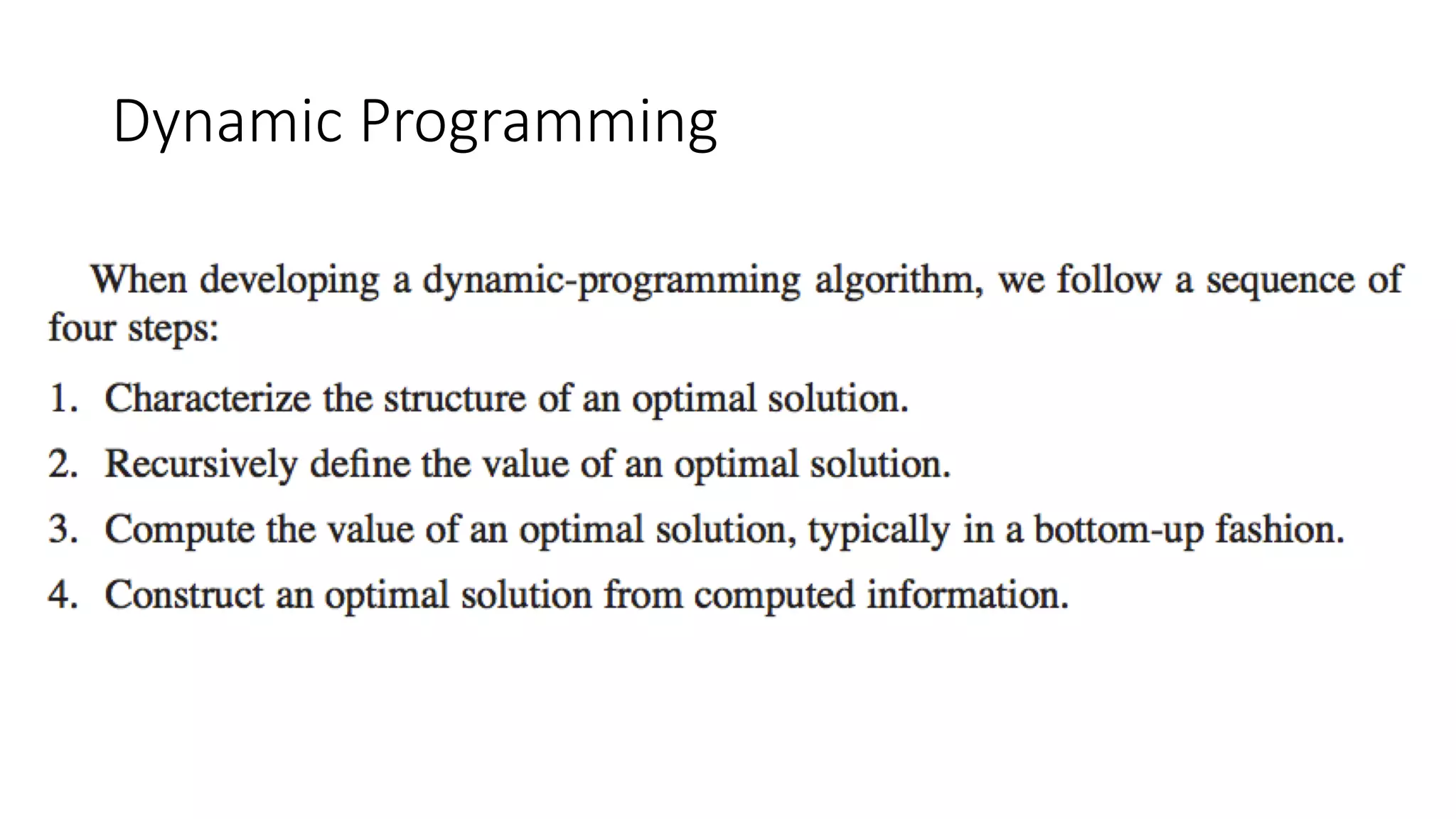
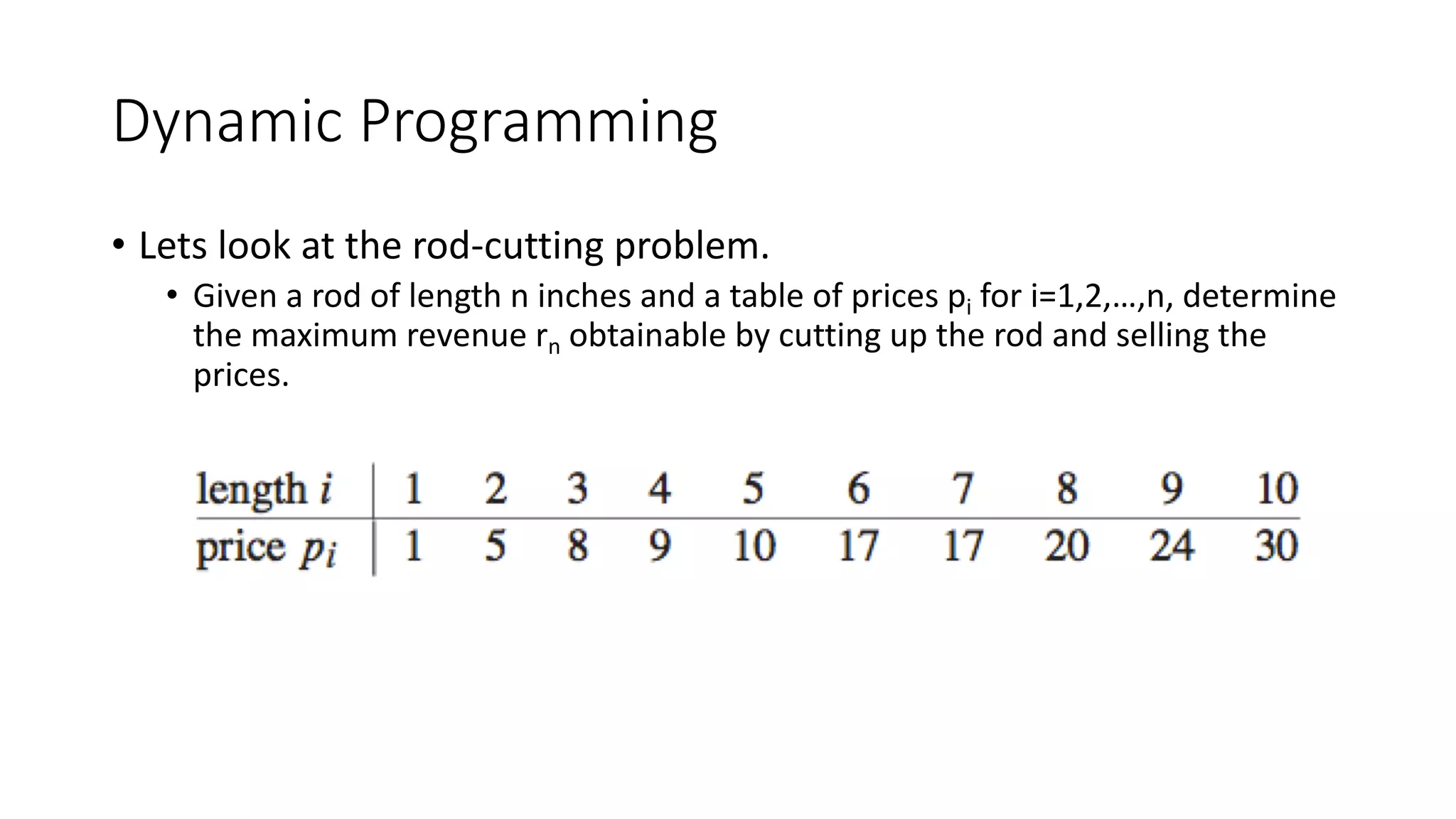

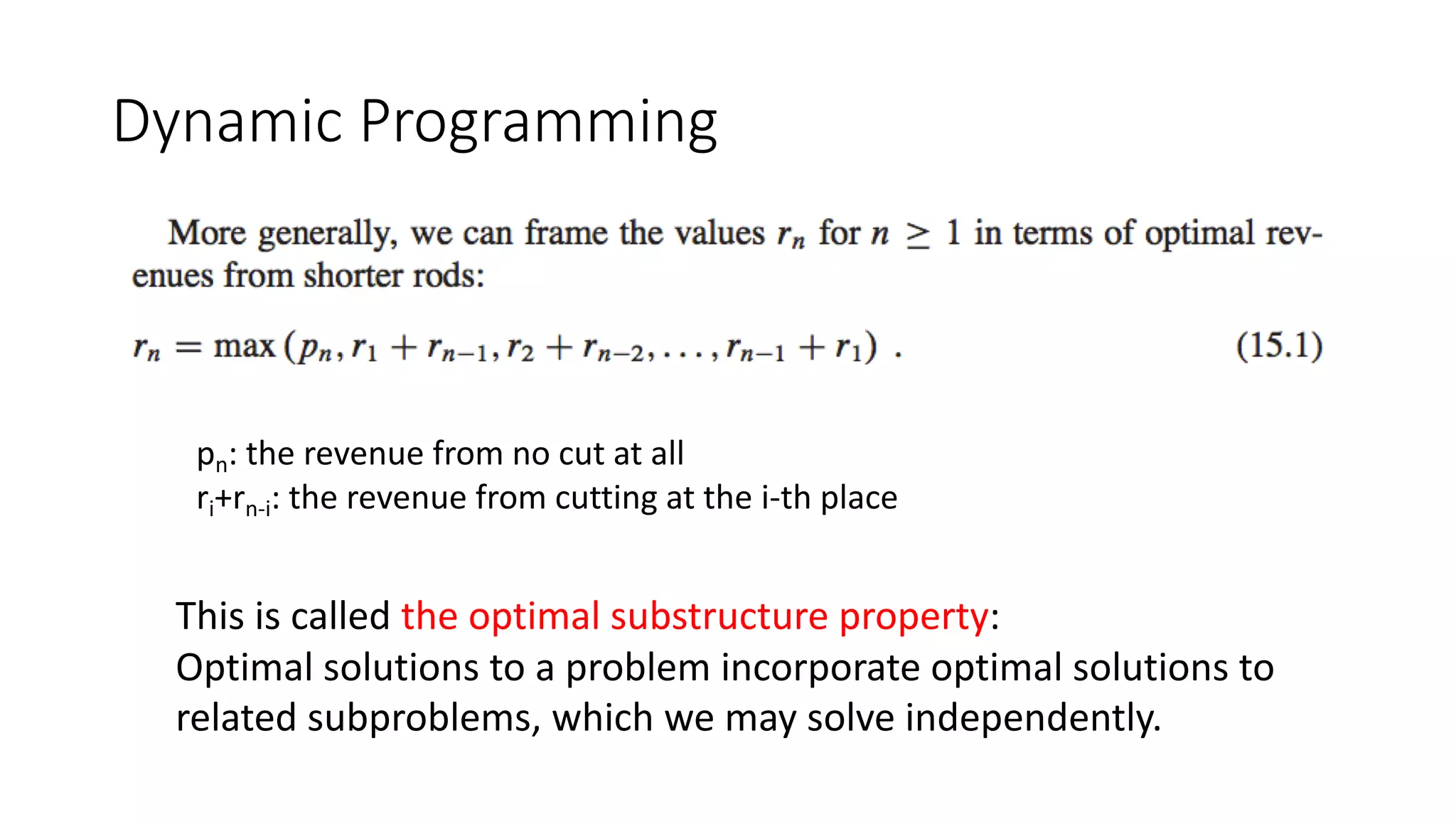


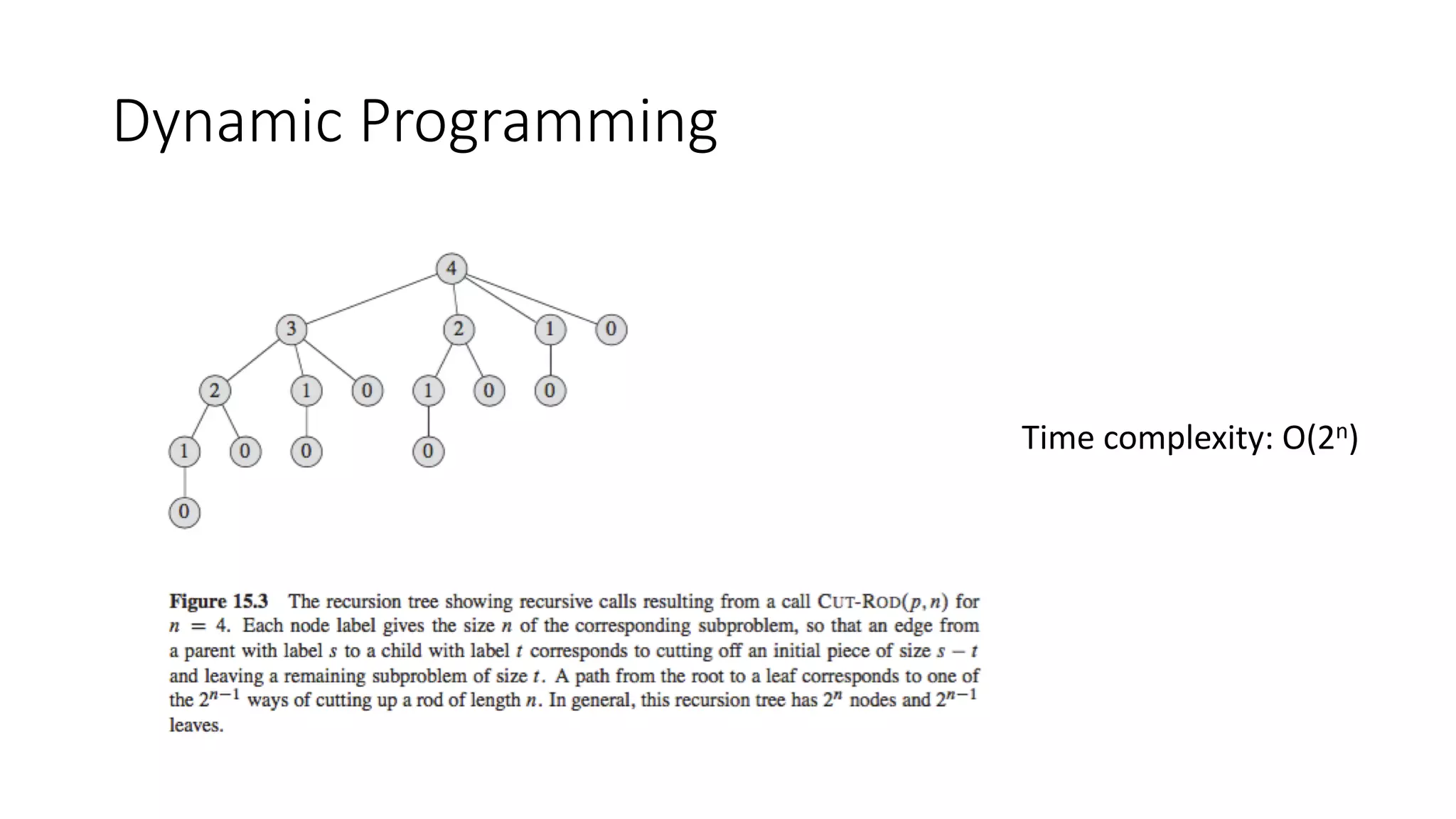
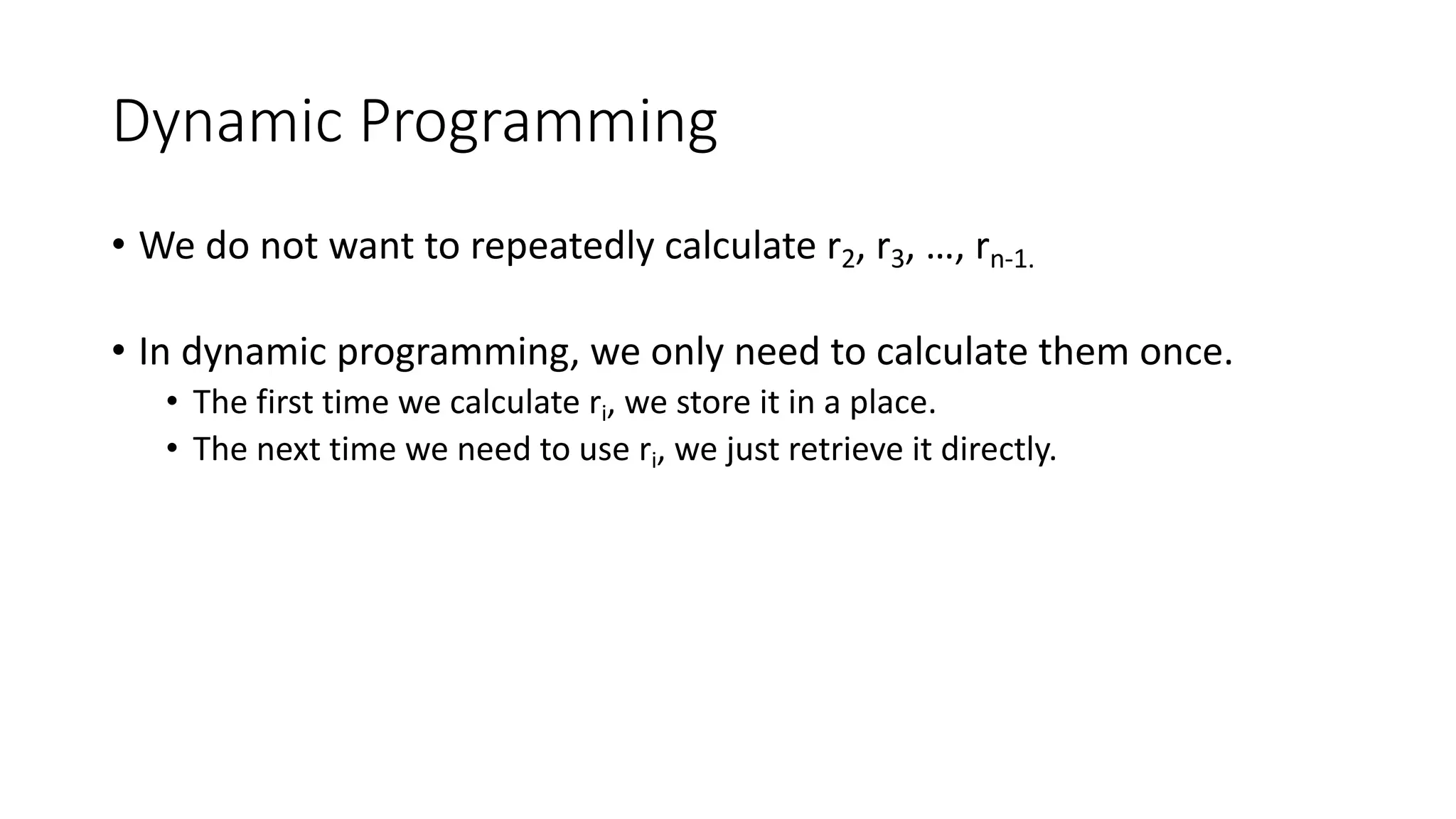
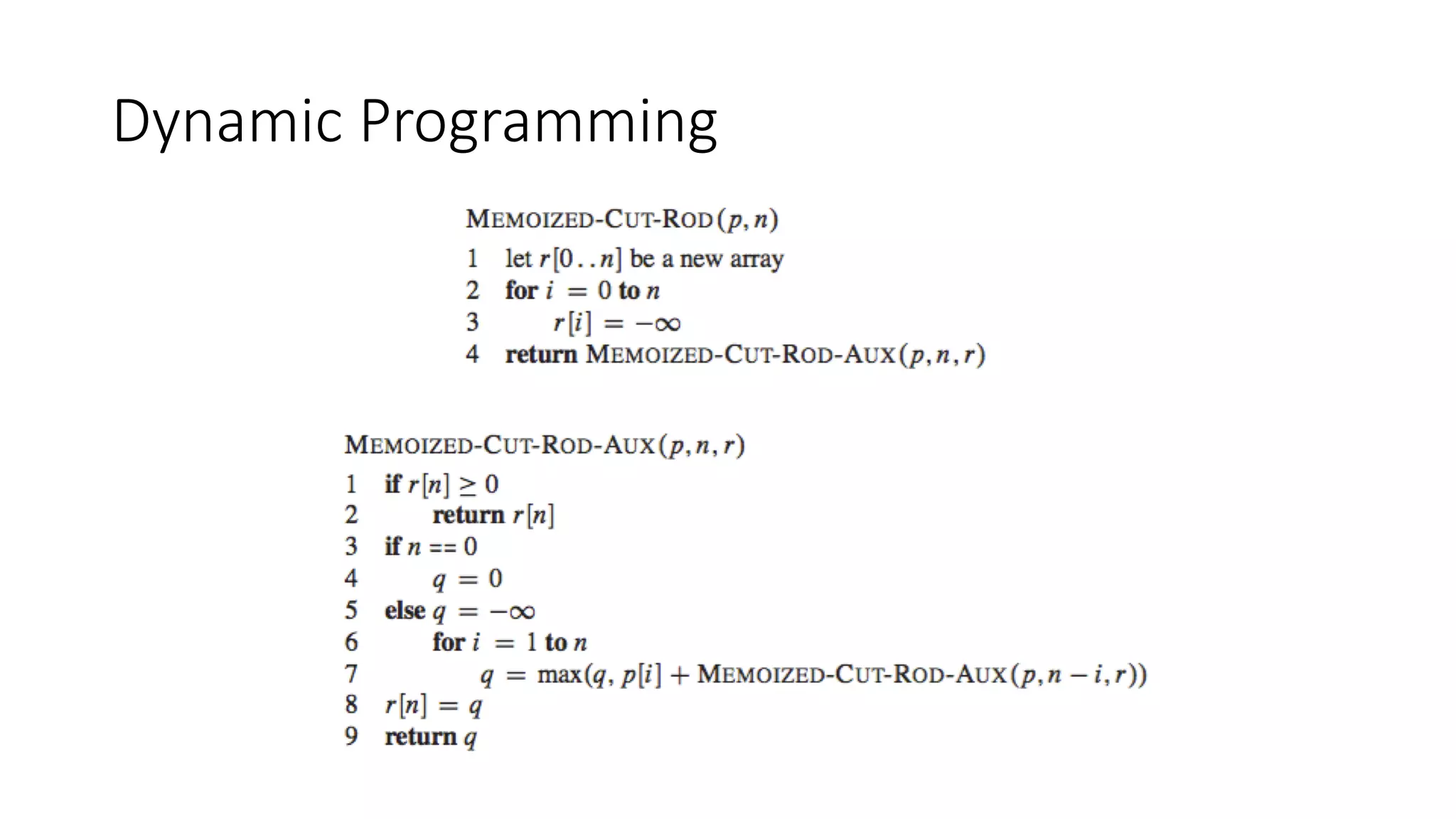
![Dynamic Programming
Key idea:
1. We use r[0,…,n] to store the maximum revenue.
2. In line 1 of MEMOIZED-CUT-ROD-AUX(p, n, r),
If we find that rn is calculated before, we just
return it directly;
Otherwise, calculate and store it.](https://image.slidesharecdn.com/lecture9-dynamicprogrammingi-221111020744-11ec2a00/75/Lecture-9-Dynamic-Programming-I-pdf-14-2048.jpg)
